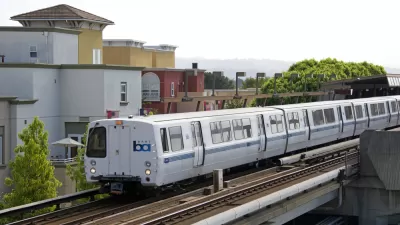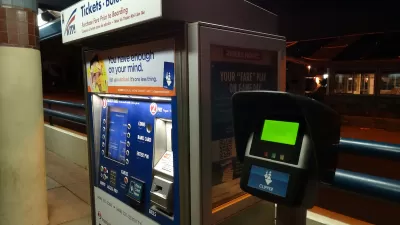With 27 transit agencies, traveling across the Bay Area can be a daunting task. Advocates for 'seamless transit' want to change that.

A blog post from TransitCenter explains the San Francisco Bay Area's complicated transit system, which boasts 27 different agencies across nine counties.
The introduction of the Clipper Card in 2002 was intended to help. For the first time, riders could use the same payment card for rides across the region. But the technology alone wasn’t enough to solve the problem. To this day, riders whose trips require them to use multiple agencies still face a penalty – interagency transfers are only sparingly accepted, and most agencies don’t coordinate their schedules, creating long waits between transfers.
Thanks in part to advocacy from a group calling itself Seamless Bay Area, a proposed state bill dubbed the "Seamless Transit Transformation Act" would mandate an integrated fare structure by 2024 and require transit agencies to coordinate schedules, service, and maps in order to receive state funding. "With the Bay Area’s infamous housing costs continuing to push people further from employment centers and ridership slow to recover from the pandemic, the initiative could be the key to bringing back riders, and making transit a viable option for tens of thousands more people," the blog states.
"There have been various attempts at fare integration over the last several decades, but the efforts haven’t been resourced or coordinated enough to be successful." To find out why, "According to [Seamless’s Advocacy Director, Adina Levin], Seamless looked at where previous integration efforts had fallen short, and brought in equity-focused groups and elected officials to the task force process and accompanying outreach in order to increase the likelihood of success." The organization has focused on developing a plan to integrate the dozens of agencies under one umbrella, with questions of logistics and revenue share still to be decided.
FULL STORY: Towards a Seamless Bay Area

Planetizen Federal Action Tracker
A weekly monitor of how Trump’s orders and actions are impacting planners and planning in America.

Maui's Vacation Rental Debate Turns Ugly
Verbal attacks, misinformation campaigns and fistfights plague a high-stakes debate to convert thousands of vacation rentals into long-term housing.

San Francisco Suspends Traffic Calming Amidst Record Deaths
Citing “a challenging fiscal landscape,” the city will cease the program on the heels of 42 traffic deaths, including 24 pedestrians.

Amtrak Rolls Out New Orleans to Alabama “Mardi Gras” Train
The new service will operate morning and evening departures between Mobile and New Orleans.

The Subversive Car-Free Guide to Trump's Great American Road Trip
Car-free ways to access Chicagoland’s best tourist attractions.

San Antonio and Austin are Fusing Into one Massive Megaregion
The region spanning the two central Texas cities is growing fast, posing challenges for local infrastructure and water supplies.
Urban Design for Planners 1: Software Tools
This six-course series explores essential urban design concepts using open source software and equips planners with the tools they need to participate fully in the urban design process.
Planning for Universal Design
Learn the tools for implementing Universal Design in planning regulations.
Heyer Gruel & Associates PA
JM Goldson LLC
Custer County Colorado
City of Camden Redevelopment Agency
City of Astoria
Transportation Research & Education Center (TREC) at Portland State University
Jefferson Parish Government
Camden Redevelopment Agency
City of Claremont





























